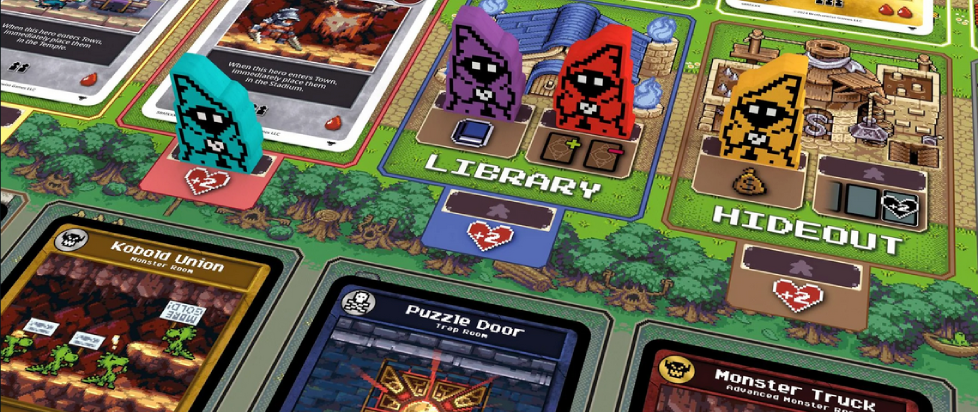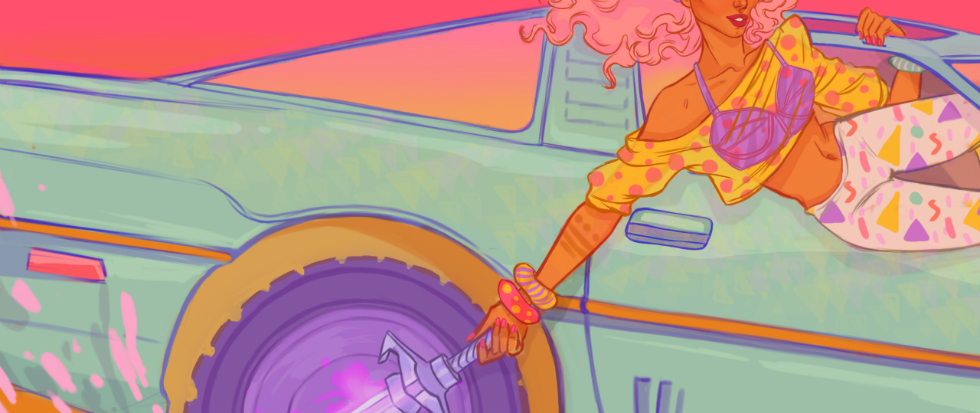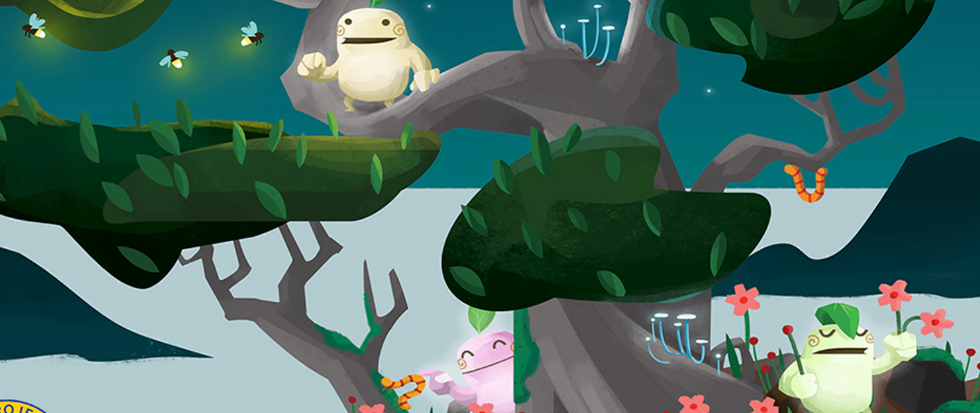
But Not Too Bold: Building a Better Dungeon in Boss Monster
I see board games in the store and they always look so cool and then I buy them and bring them home, I’m so excited to open them, and then I play them, like, twice… This column is dedicated to the love of games for those of us whose eyes may be bigger than our stomachs when it comes to playing, and the joy that we can all take from games, even if we don’t play them very often.
———
Years back, I was attending a board game night at a friend’s house where I was introduced to the game Boss Monster. I had heard of it before, but this was my first time playing, in probably ideal surroundings – a bunch of fellow nerds, some of whom had played the game before.
That was also my last experience with Boss Monster until several years later. Though I enjoyed my time, I didn’t pick up the game or any of its expansions until I backed the Kickstarter for Overboss, also from Brotherwise Games and ostensibly set in the same pixelated video game-adjacent universe.
As in Overboss, the premise of Boss Monster sees the usual script being flipped, as you take control of one of the eponymous boss monsters, who must construct dungeons to simultaneously lure adventurers and ensure that they meet their doom. The trick of the game is in that delicate balance between building dungeons that are tempting enough to draw in the adventurers you need, while challenging enough to ensure that those adventurers don’t survive to the end in order to do you harm.
At a glance, the mechanics of Boss Monster seem incredibly simple. Each player takes a boss monster and begins building a dungeon with that monster at the end. They do this by placing a new room in their dungeon on each turn, drawn from a deck of cards. Furthermore, adventurers show up in “town” at the start of every turn, and are drawn to the dungeons which boast treasure icons matching their preferred form of loot.
Once attracted to a dungeon, an adventurer makes their way through it one “room” at a time, with each room potentially doing damage to the adventurer. If the dungeon is powerful enough to kill them, then the player who took them out gains their “soul” (card). If not, the adventurer makes it to the end of the dungeon and damages the boss monster there. Gather 10 souls or take 5 damage and you win or lose, respectively.
Each of these game elements are made up of cards and one of the selling points of Boss Monster is that, from a bits and bobs perspective, there’s not much to it. The whole game is contained in a little box not much bigger than what new checkbooks would have come in, back when checkbooks were a thing, and all that you need to play are the handful of decks contained within.
It is the interactions of these various cards that make Boss Monster infinitely more complex than it initially appears, a fact that is only exacerbated by the numerous expansions that are available. In fact, as of this writing, a new Kickstarter is underway for yet another expansion, this one called Super Boss Monster and borrowing the aesthetics of the Super Nintendo, rather than the NES, although it promises to be fully “backward compatible” with all previous iterations of the game.

(This works out nicely for their whole aesthetic, as the Boss Monster boxes were already roughly the same size and shape as the boxes for Super Nintendo games.)
In any game with such a myriad of possible card combinations (there are at least five expansions, at the time of this writing), rules questions are inevitably going to pop up. Brotherwise has attempted to address these first via the “instruction booklets” that come with each iteration of the game, and later with various online resources and FAQs. Still, though, the apparent simplicity of Boss Monster does not translate into a game that is quite as pleasingly streamlined and yet strategically complex as the later Overboss.
In other ways, however, the selling points of the two games are extremely similar. While it’s necessary to have a solid game running underneath, the real draw of both Boss Monster and Overboss is the low-res pixel art of side-scrolling dungeon rooms (in the former case) and top-down overworlds (in the latter). And there, at least, Boss Monster does have something of an edge, as the card-based format allows for a dizzying array of dungeon rooms, critters, spells, boss monsters, and adventurers.
These are sometimes jokey and frequently familiar, rehashing elements from Dungeons & Dragons and fantasy video games with the serial numbers filed off. In the basic iteration of the game, for instance, there is a boss monster that looks an awful lot like Abobo from Double Dragon, a couple of references to Metroid, and a card inspired by the classic D&D Players Handbook cover from 1978, to name only a very few.
There are also scads of classic fantasy and D&D monsters, from kobolds and goblins to mimics, owlbears, myconids, and more. “The Next Level,” the only expansion that I actually own, adds in nods to Maniac Mansion, Pac-Man, Super Mario Bros., The Princess Bride, rust monsters, and even Orcus, D&D’s Demon Lord of Undeath – again, merely scratching the surface of all the various pop culture references contained within.
Along with the cutesy and nostalgic pixel art, playing “spot the reference” is part of the fun, especially if you’re playing with the game’s target audience – a bunch of nerds who will recognize all this shit.
———
Orrin Grey is a writer, editor, game designer, and amateur film scholar who loves to write about monsters, movies, and monster movies. He’s the author of several spooky books, including How to See Ghosts & Other Figments. You can find him online at orringrey.com.





